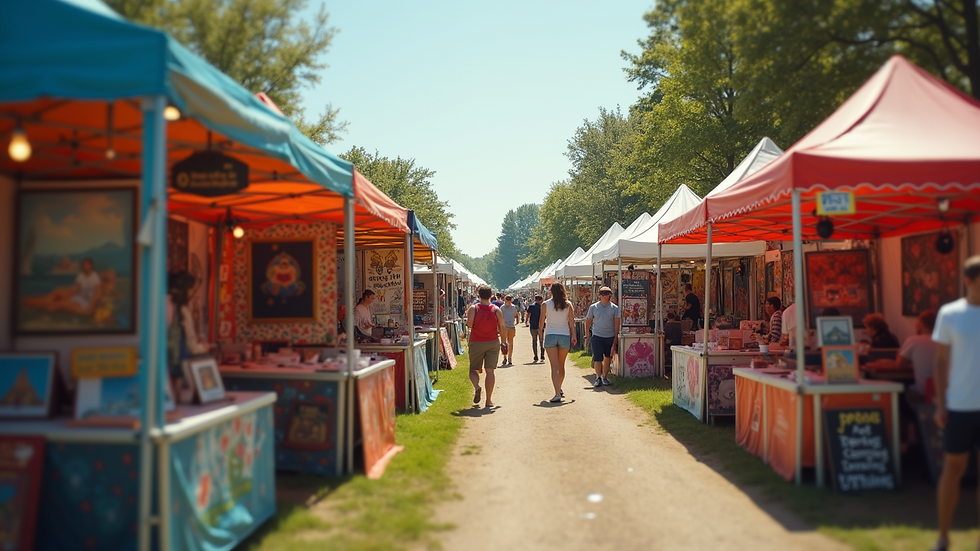Preparing for a Juried Art Exhibition
- Oleo Admin
- Sep 17
- 3 min read
Preparing for an art competition can be both exciting and challenging. Whether you are a seasoned artist or a newcomer, understanding how to get ready effectively can make a significant difference in your experience and results. This guide will walk you through practical steps to help you shine in your next art competition.
Understanding the Art Competition Preparation Process
Before diving into creating your artwork, it is essential to understand the competition's requirements and expectations. Each competition has its own rules regarding size, medium, theme, and submission deadlines. Start by carefully reading the guidelines provided by the organizers.
Research the competition: Look at past winners and the style of art that tends to be favored.
Clarify submission details: Know the exact dimensions allowed, framing requirements, and whether digital submissions are accepted.
Plan your timeline: Allocate enough time for creating, drying, framing, and shipping your artwork.
By organizing these details early, you avoid last-minute stress and ensure your work meets all criteria.

Key Steps in Art Competition Preparation
Once you understand the rules, focus on creating your artwork with intention and care. Here are some actionable recommendations:
Concept Development
Brainstorm ideas that align with the competition theme. Sketch multiple concepts and select the strongest one. This step helps you clarify your vision and avoid wasted effort.
Material Selection
Choose high-quality materials that enhance your work’s durability and appearance. For example, use archival paper or canvas and professional-grade paints.
Practice and Experiment
Create small studies or practice pieces to test techniques and color schemes. This experimentation can lead to unexpected improvements.
Final Artwork Creation
Work in a distraction-free environment. Take breaks to maintain fresh eyes and avoid burnout.
Presentation Matters
Frame your artwork professionally if required. A well-chosen frame can elevate your piece and make it stand out.
Documentation
Photograph your artwork in good lighting for your portfolio and submission. Include detailed descriptions and artist statements if requested.

Tips for Navigating the Submission Process
Submitting your artwork correctly is as important as creating it. Follow these tips to ensure a smooth submission:
Double-check all forms and labels: Ensure your name, contact information, and artwork details are accurate.
Package securely: Use sturdy materials to protect your artwork during shipping.
Meet deadlines: Submit your work well before the deadline to avoid last-minute issues.
Keep copies: Retain copies of all submission materials and receipts.
If the competition is a juried art exhibition, remember that your work will be evaluated by a panel of judges. Present your best work and follow all instructions carefully to maximize your chances.

Preparing Mentally and Physically for the Competition
Art competitions can be stressful. Preparing yourself mentally and physically can improve your performance and enjoyment.
Stay organized: Keep a checklist of tasks and deadlines.
Practice self-care: Get enough rest, eat well, and take breaks during your creative process.
Manage expectations: Understand that rejection is part of the process and an opportunity to grow.
Seek feedback: Share your work with trusted peers for constructive criticism before submission.
These habits help maintain your motivation and confidence throughout the competition journey.
Beyond the Competition: Leveraging Your Experience
Participating in an art competition is a valuable learning experience. Use it to build your career and artistic skills.
Network with other artists and judges: Attend openings and events to make connections.
Update your portfolio: Add your competition pieces and any awards or recognition.
Reflect on feedback: Use critiques to improve future work.
Promote your participation: Share your experience on social media and your website to attract new opportunities.
Each competition is a stepping stone toward your artistic goals.
By following these steps, you can approach your next art competition with confidence and clarity. Preparation is key to showcasing your talent and making the most of every opportunity. Good luck!




Comments